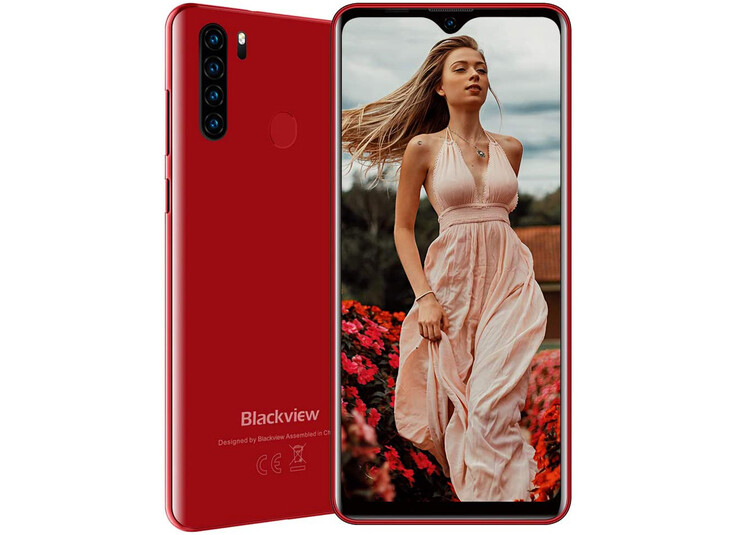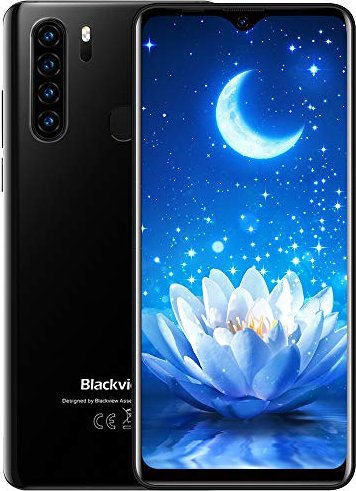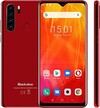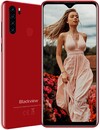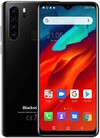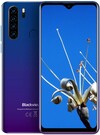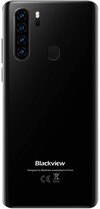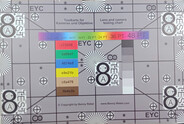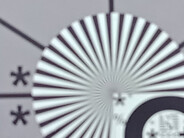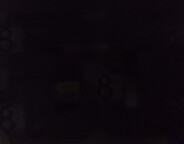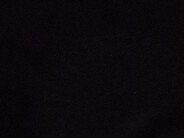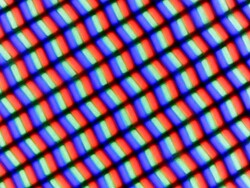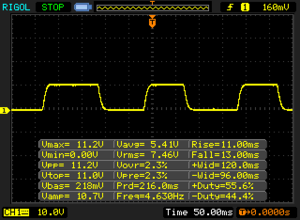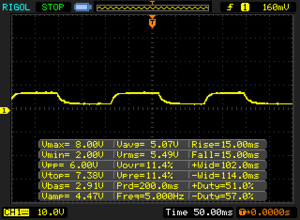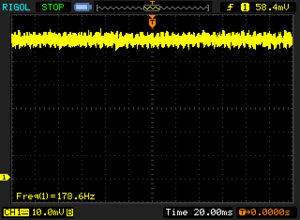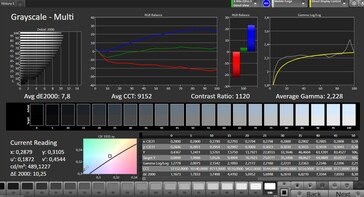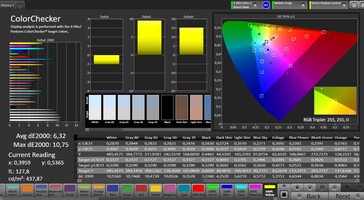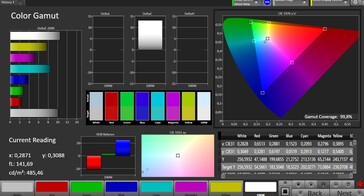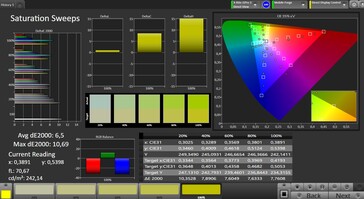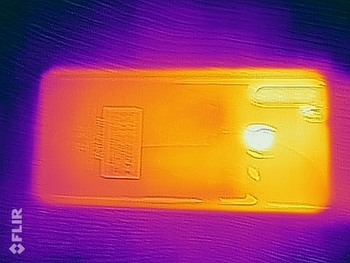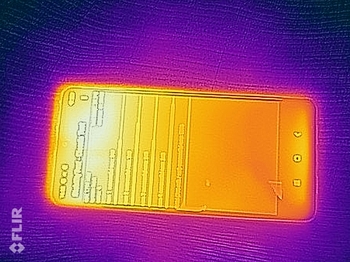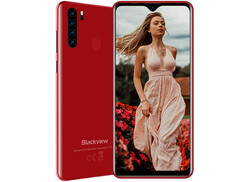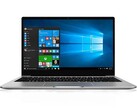Blackview A80 Plus Smartphone Review - Little Money For Fast Internet
Possible competitors in comparison
Rating | Rating Version | Date | Model | Weight | Drive | Size | Resolution | Price from |
|---|---|---|---|---|---|---|---|---|
| 74.5 % v7 (old) | v7 (old) | 03 / 2021 | Blackview A80 Plus Helio P22 MT6762, PowerVR GE8320 | 180 g | 64 GB eMMC Flash | 6.49" | 1560x720 | |
| 74.5 % v7 (old) | v7 (old) | 03 / 2020 | Blackview A80 Pro Helio P25, Mali-T880 MP2 | 180 g | 64 GB eMMC Flash | 6.49" | 1560x720 | |
| 75.5 % v7 (old) | v7 (old) | 02 / 2021 | Motorola Moto E7 Plus SD 460, Adreno 610 | 200 g | 64 GB eMMC Flash | 6.50" | 1600x720 | |
| 72.5 % v7 (old) | v7 (old) | 03 / 2021 | Samsung Galaxy A02s SD 450, Adreno 506 | 196 g | 32 GB eMMC Flash | 6.50" | 1600x720 |
Case, equipment and operation - Good communication equipment
With its glossy surface and gradient color on the back, the smartphone looks quite chic, but it is also quite susceptible to fingerprints. There are three color variants: Blue, Red and Black. The casing is quite stable and does not react sensitively to pressure.
In terms of weight, the smartphone is relatively light, but still feels good in the hand.
The Wi-Fi module proves to be the A80 Plus' great strength in our test with the reference router Netgear Nighthawk AX12: Since Wi-Fi 5 is supported, you can surf the Internet much faster with the Blackview A80 Plus than with most devices in its price range. The transfer rates are also quite stable.
It is also pleasing that quite a few LTE networks are supported, so you can use the Blackview A80 Plus to access the mobile Internet even when traveling further abroad. NFC is also on board, so those who like to store with Google Pay or similar payment services can do so with the device.
A fingerprint sensor on the back is responsible for quickly unlocking the smartphone. The recognition is quite accurate, but a small delay is noticeable. The touchscreen can be operated well.
| Networking | |
| iperf3 transmit AX12 | |
| Blackview A80 Plus | |
| Motorola Moto E7 Plus | |
| Blackview A80 Pro | |
| Samsung Galaxy A02s | |
| iperf3 receive AX12 | |
| Blackview A80 Plus | |
| Motorola Moto E7 Plus | |
| Blackview A80 Pro | |
| Samsung Galaxy A02s | |
Cameras - Actually only a single camera
You should not expect too much flexibility from the 4x camera on the back. Only the main lens can be used for photos, the other three very low-resolution cameras are only used for support. In terms of image quality, however, the 13-megapixel lens does not do badly at all: The flower is recorded with passable detail sharpness and contrasts. The surrounding image looks less detailed, but the exposure is quite good for the price range.
The camera is quite weak in low light and high contrasts, but you should not expect too much from a very cheap phone. In the lab with very good exposure, the autofocus has clear problems, the contrasts also vary depending on the image area, but overall they are not that bad. The camera no longer recognizes anything at 1 lux illumination
Thus, the camera does not do a bad job for a cheap smartphone. However, you should not rely on consistently sharp and detailed pictures and rather take a subject several times in doubt to increase the chances of a good picture.
Image comparison
Choose a scene and navigate within the first image. One click changes the position on touchscreens. One click on the zoomed-in image opens the original in a new window. The first image shows the scaled photograph of the test device.
Main Lens FlowerMain Lens EnvironmentMain Lens Low Light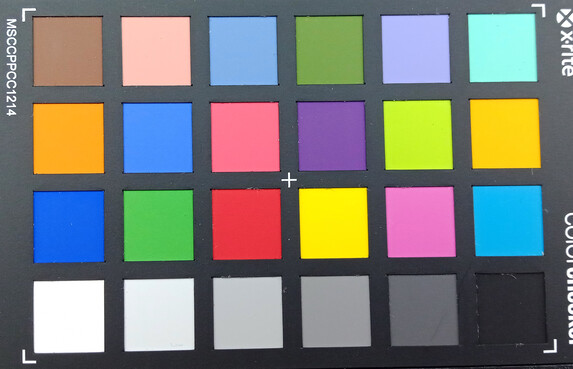
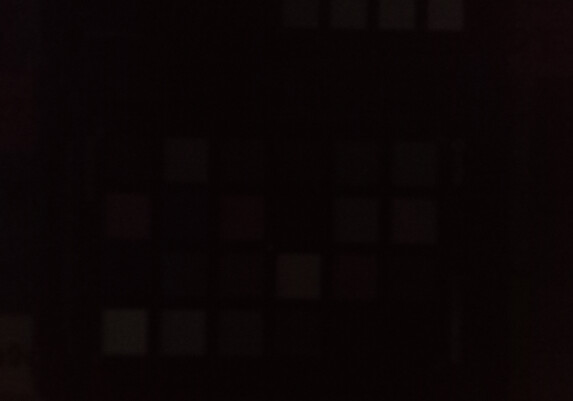
Display - PWM with low frequency
The screen does not get as bright as the Blackview A80 Pro, but it is still on par with the class. The black value is only on a medium level, which also affects the contrast ratio.
You should not attach great importance to exact colors or a display without a blue cast, neither of which the Blackview A80 Plus can offer.
We also noticed PWM with quite a low frequency, so sensitive users should definitely try the display at low brightness before buying it.
| |||||||||||||||||||||||||
Brightness Distribution: 84 %
Center on Battery: 475 cd/m²
Contrast: 969:1 (Black: 0.49 cd/m²)
ΔE ColorChecker Calman: 6.32 | ∀{0.5-29.43 Ø4.78}
ΔE Greyscale Calman: 7.8 | ∀{0.09-98 Ø5}
99.8% sRGB (Calman 2D)
Gamma: 2.228
CCT: 9152 K
| Blackview A80 Plus IPS, 1560x720, 6.5" | Blackview A80 Pro IPS, 1560x720, 6.5" | Motorola Moto E7 Plus IPS, 1600x720, 6.5" | Samsung Galaxy A02s PLS, 1600x720, 6.5" | |
|---|---|---|---|---|
| Response Times | -24% | -82% | -34% | |
| Response Time Grey 50% / Grey 80% * (ms) | 30 ? | 44 ? -47% | 59 ? -97% | 48 ? -60% |
| Response Time Black / White * (ms) | 24 ? | 24 ? -0% | 40 ? -67% | 26 ? -8% |
| PWM Frequency (Hz) | 178.6 ? | 1562 ? | 870 ? | |
| Screen | 19% | 19% | 12% | |
| Brightness middle (cd/m²) | 475 | 565 19% | 471 -1% | 482 1% |
| Brightness (cd/m²) | 467 | 554 19% | 446 -4% | 460 -1% |
| Brightness Distribution (%) | 84 | 93 11% | 90 7% | 92 10% |
| Black Level * (cd/m²) | 0.49 | 0.32 35% | 0.38 22% | 0.44 10% |
| Contrast (:1) | 969 | 1766 82% | 1239 28% | 1095 13% |
| Colorchecker dE 2000 * | 6.32 | 6.84 -8% | 3.97 37% | 5.52 13% |
| Colorchecker dE 2000 max. * | 10.75 | 11.01 -2% | 7.47 31% | 7.78 28% |
| Greyscale dE 2000 * | 7.8 | 8.1 -4% | 5.2 33% | 6.3 19% |
| Gamma | 2.228 99% | 2.49 88% | 2.285 96% | 2.54 87% |
| CCT | 9152 71% | 9040 72% | 7791 83% | 7882 82% |
| Total Average (Program / Settings) | -3% /
11% | -32% /
-1% | -11% /
3% |
* ... smaller is better
Display Response Times
| ↔ Response Time Black to White | ||
|---|---|---|
| 24 ms ... rise ↗ and fall ↘ combined | ↗ 11 ms rise | |
| ↘ 13 ms fall | ||
| The screen shows good response rates in our tests, but may be too slow for competitive gamers. In comparison, all tested devices range from 0.1 (minimum) to 240 (maximum) ms. » 53 % of all devices are better. This means that the measured response time is worse than the average of all tested devices (20.2 ms). | ||
| ↔ Response Time 50% Grey to 80% Grey | ||
| 30 ms ... rise ↗ and fall ↘ combined | ↗ 15 ms rise | |
| ↘ 15 ms fall | ||
| The screen shows slow response rates in our tests and will be unsatisfactory for gamers. In comparison, all tested devices range from 0.165 (minimum) to 636 (maximum) ms. » 39 % of all devices are better. This means that the measured response time is similar to the average of all tested devices (31.6 ms). | ||
Screen Flickering / PWM (Pulse-Width Modulation)
| Screen flickering / PWM detected | 178.6 Hz | ≤ 15 % brightness setting | |
The display backlight flickers at 178.6 Hz (worst case, e.g., utilizing PWM) Flickering detected at a brightness setting of 15 % and below. There should be no flickering or PWM above this brightness setting. The frequency of 178.6 Hz is relatively low, so sensitive users will likely notice flickering and experience eyestrain at the stated brightness setting and below. In comparison: 53 % of all tested devices do not use PWM to dim the display. If PWM was detected, an average of 8108 (minimum: 5 - maximum: 343500) Hz was measured. | |||
Performance, emissions and battery life - Passable power
The performance is quite decent thanks to the MediaTek Helio P22 with 8 cores and a maximum clock of 2 GHz, considering the smartphone's price. At least in terms of processor performance, our review sample lags a bit behind in terms of graphics. Overall, the Blackview A80 Pro offers a bit more power, but you will hardly notice that in everyday use. Simple apps run quite well on both smartphones, but you will have to make concessions when it gets a bit more demanding.
We tested the transfer rates of the micro-SD reader with our Toshiba Exceria Pro M501. They are on a fairly normal level, although there is still some room for improvement in the write speed. The internal storage is not particularly fast, but none of the comparison devices is much better here.
The smartphone's maximum temperature of 41.1 °C under longer load is also average. It could get uncomfortable in very high ambient temperatures, but we do not see any problematic heating otherwise.
A mono speaker for sound output is found on the bottom of the Blackview A80 Plus. It is averagely loud and also sounds average: The trebles are not too unpleasant, but a really full sound is not produced either. The speaker is definitely okay for occasional use.
The battery of the Blackview A80 Plus offers a somewhat below-average capacity for the class with 4,680 mAh. Nevertheless, the Blackview A80 Pro achieves decent runtimes: 15:43 hours in our Wi-Fi test speak for several days away from the power outlet. However, Samsung's Galaxy A02s proves that it can last longer. Charging is only possible with a maximum of 10 watts, so it can take up to 2 hours until the battery is full again.
| PCMark for Android - Work 2.0 performance score (sort by value) | |
| Blackview A80 Plus | |
| Blackview A80 Pro | |
| Motorola Moto E7 Plus | |
| Samsung Galaxy A02s | |
| Average Mediatek Helio P22 MT6762 (3805 - 5380, n=21) | |
| GFXBench | |
| on screen Aztec Ruins Normal Tier Onscreen (sort by value) | |
| Blackview A80 Plus | |
| Blackview A80 Pro | |
| Motorola Moto E7 Plus | |
| Samsung Galaxy A02s | |
| Average Mediatek Helio P22 MT6762 (6.4 - 7.6, n=21) | |
| Average of class Smartphone (6.2 - 166, n=211, last 2 years) | |
| 1920x1080 Aztec Ruins Normal Tier Offscreen (sort by value) | |
| Blackview A80 Plus | |
| Blackview A80 Pro | |
| Motorola Moto E7 Plus | |
| Samsung Galaxy A02s | |
| Average Mediatek Helio P22 MT6762 (3.5 - 4.7, n=21) | |
| Average of class Smartphone (3.4 - 367, n=211, last 2 years) | |
| on screen Aztec Ruins High Tier Onscreen (sort by value) | |
| Blackview A80 Plus | |
| Blackview A80 Pro | |
| Motorola Moto E7 Plus | |
| Samsung Galaxy A02s | |
| Average Mediatek Helio P22 MT6762 (4.1 - 4.8, n=21) | |
| Average of class Smartphone (0.85 - 144, n=212, last 2 years) | |
| 2560x1440 Aztec Ruins High Tier Offscreen (sort by value) | |
| Blackview A80 Plus | |
| Blackview A80 Pro | |
| Motorola Moto E7 Plus | |
| Samsung Galaxy A02s | |
| Average Mediatek Helio P22 MT6762 (1.3 - 1.6, n=21) | |
| Average of class Smartphone (1.2 - 129, n=211, last 2 years) | |
| Blackview A80 Plus | Blackview A80 Pro | Motorola Moto E7 Plus | Samsung Galaxy A02s | Average 64 GB eMMC Flash | Average of class Smartphone | |
|---|---|---|---|---|---|---|
| AndroBench 3-5 | -9% | 73% | 58% | 8% | 850% | |
| Sequential Read 256KB (MB/s) | 286.7 | 255 -11% | 313.8 9% | 299 4% | 277 ? -3% | 2226 ? 676% |
| Sequential Write 256KB (MB/s) | 210.8 | 187.7 -11% | 192.7 -9% | 103.9 -51% | 178.4 ? -15% | 1848 ? 777% |
| Random Read 4KB (MB/s) | 52.2 | 42.5 -19% | 92.4 77% | 84.8 62% | 60.7 ? 16% | 295 ? 465% |
| Random Write 4KB (MB/s) | 21.2 | 15.6 -26% | 97.1 358% | 88.5 317% | 33.8 ? 59% | 335 ? 1480% |
| Sequential Read 256KB SDCard (MB/s) | 82.4 ? | 80.1 ? -3% | 81.5 ? -1% | 86.4 ? 5% | 77.4 ? -6% | |
| Sequential Write 256KB SDCard (MB/s) | 62.2 ? | 73.3 ? 18% | 64.4 ? 4% | 69.4 ? 12% | 58.3 ? -6% |
Temperature
(±) The maximum temperature on the upper side is 40.2 °C / 104 F, compared to the average of 35.2 °C / 95 F, ranging from 21.9 to 247 °C for the class Smartphone.
(±) The bottom heats up to a maximum of 41.1 °C / 106 F, compared to the average of 34 °C / 93 F
(+) In idle usage, the average temperature for the upper side is 30.3 °C / 87 F, compared to the device average of 32.9 °C / 91 F.
Loudspeaker
Blackview A80 Plus audio analysis
(±) | speaker loudness is average but good (78.7 dB)
Bass 100 - 315 Hz
(-) | nearly no bass - on average 27.7% lower than median
(±) | linearity of bass is average (10.8% delta to prev. frequency)
Mids 400 - 2000 Hz
(±) | higher mids - on average 5.7% higher than median
(+) | mids are linear (6.6% delta to prev. frequency)
Highs 2 - 16 kHz
(+) | balanced highs - only 4.4% away from median
(+) | highs are linear (6.5% delta to prev. frequency)
Overall 100 - 16.000 Hz
(±) | linearity of overall sound is average (25.5% difference to median)
Compared to same class
» 63% of all tested devices in this class were better, 7% similar, 30% worse
» The best had a delta of 11%, average was 35%, worst was 134%
Compared to all devices tested
» 78% of all tested devices were better, 5% similar, 18% worse
» The best had a delta of 4%, average was 24%, worst was 134%
Blackview A80 Pro audio analysis
(±) | speaker loudness is average but good (79.6 dB)
Bass 100 - 315 Hz
(-) | nearly no bass - on average 26.4% lower than median
(±) | linearity of bass is average (11.6% delta to prev. frequency)
Mids 400 - 2000 Hz
(±) | higher mids - on average 10.3% higher than median
(±) | linearity of mids is average (8.4% delta to prev. frequency)
Highs 2 - 16 kHz
(±) | higher highs - on average 5.7% higher than median
(±) | linearity of highs is average (7.4% delta to prev. frequency)
Overall 100 - 16.000 Hz
(-) | overall sound is not linear (33.4% difference to median)
Compared to same class
» 84% of all tested devices in this class were better, 1% similar, 15% worse
» The best had a delta of 11%, average was 35%, worst was 134%
Compared to all devices tested
» 92% of all tested devices were better, 1% similar, 7% worse
» The best had a delta of 4%, average was 24%, worst was 134%
Battery life
| Blackview A80 Plus 4680 mAh | Blackview A80 Pro 4680 mAh | Motorola Moto E7 Plus 5000 mAh | Samsung Galaxy A02s 5000 mAh | Average of class Smartphone | |
|---|---|---|---|---|---|
| Battery Runtime | |||||
| WiFi Websurfing (h) | 15.7 | 15.9 1% | 15.8 1% | 20 27% | 19.3 ? 23% |
Pros
Cons
Verdict - Plus or Pro?
The Blackview A80 Plus and the A80 Pro, which we tested about a year ago, are very close in terms of features. However, the A80 Plus has a big advantage: The much faster Wi-Fi module, since most buyers primarily use their smartphone online.
Sure, the A80 Pro offers a brighter screen and a bit more power, but we would still say that the A80 Plus is currently the better offer. With NFC, it offers the option of using mobile payment services and is otherwise up to class standard in many areas.
The Blackview A80 Plus offers fast Internet, NFC, and good performance, making it a very interesting entry-level phone.
Of course, you have to make concessions in terms of camera and screen, but the buyer will probably have to accept that for well under 200 Euros. Overall, the A80 Plus is a good offer that especially convinces with its communication options like fast Wi-Fi, NFC, and many LTE networks.
Price and availability
The Blackview A80 Plus is available for 124.99 Euros at amazon.de at the time of testing. In German-speaking countries, the smartphone is only available as a Chinese import.
Blackview A80 Plus
- 03/17/2021 v7 (old)
Florian Schmitt




